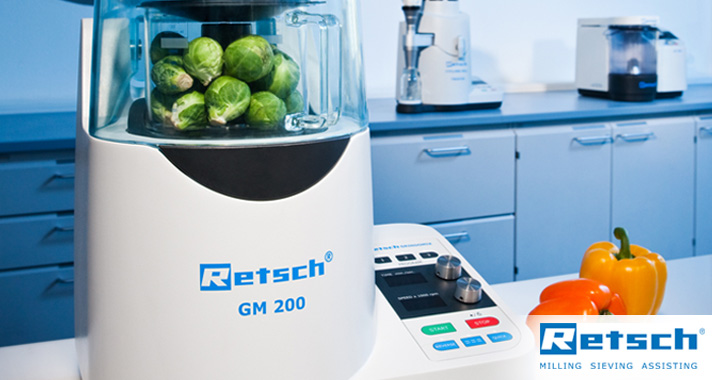Food products are available in a great variety of forms and consistencies and are usually inhomogeneous. To determine nutritional values or detect hazardous substances, for example, homogeneous and representative samples are required to obtain reproducible and meaningful results. Samples, which are often very complex, need to be homogenized and reduced to a suitable particle size prior to analysis.
Tracing poison! Quickly determine heavy metals and contaminants in foodstuffs
Reports on findings of hazardous substances in food products are nothing unusual these days: pesticides in fruit, arsenic in rice or toxic plant parts in tea, fish is examined for pollutants such as heavy metals, carcinogenic polychlorinated biphenyls or pharmaceutical residues as part of consumer protection.
Foods like chocolate
The quality control process not only includes testing the innocuousness of the product (e. g. fungi, heavy metal contamination) or the ingredients (fat, carbohydrate content), it also involves size reduction to an adequate particle size for a sensory test of the cocoa liquor.
Raw material
In food processing companies quality control serves to ensure and maintain the requirements posed on the products. To meet consumer expectations food safety is not only required during the manufacturing process, the quality of the raw materials is also crucial. Continuous inspections of incoming raw materials are a precondition for a consistently high product quality of the end product.
Therefore, permanent quality control is an indispensable tool of consumer protection. Apart from the actual food testing, sample preparation by homogenization is essential to obtain reliable results.
Whether the analysis utilises mass spectrometry for the detection of arsenic in rice, or High Performance Liquid Chromatography for the presence of pyrrolizidine in tea or polychlorinated biphenyls, sieving for the presence of dust. Both methods require a suitable milling solution. The milling must be homogenous and below a certain size for increased solubility in aqueous medium or solvents for subsequent analysis.
Download our Retsch magazine below to learn more.









